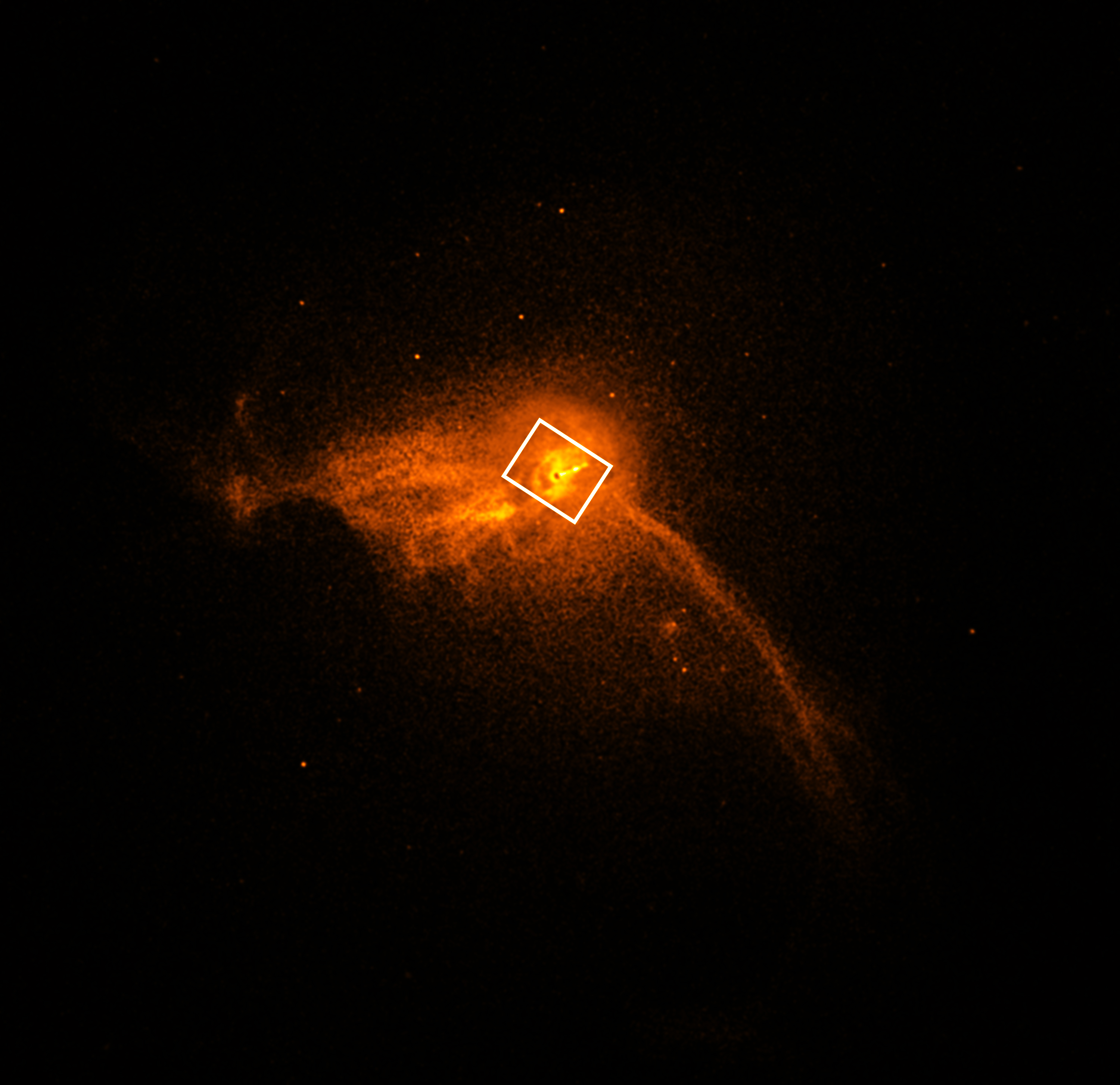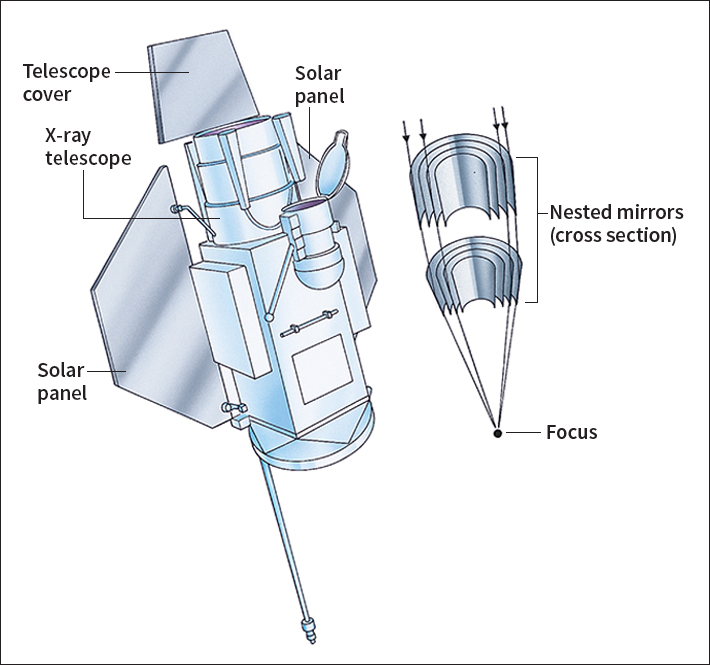Chandra X-ray Observatory is an artificial satellite equipped with an X-ray telescope and two cameras. It can produce images that are 25 times sharper than pictures taken with previous X-ray telescopes. Its focusing power is equivalent to the ability to read a stop sign from a distance of 12 miles (20 kilometers). The National Aeronautics and Space Administration (NASA) launched Chandra from the space shuttle Columbia on July 23, 1999.
X rays occur in the cosmos when gas is heated to millions of degrees. Sources of X rays include exploding stars known as supernovae, colliding galaxies, and matter swirling around black holes. A black hole is an invisible object with such powerful gravitational force that not even light can escape its surface.
The first image made by Chandra shows Cassiopeia A, an expanding shell of gas left over from a supernova explosion. The shell’s temperature is about 50 million °C. Near the center of the shell is a bright point of X rays. This point may be a black hole or neutron star (a small, extremely dense star) that remained after the explosion. Cassiopeia A is about 10,000 light-years from Earth. One light-year is the distance that light travels in a vacuum in a year, about 5.88 trillion miles (9.46 trillion kilometers).
Loading the player...Antennae galaxies
Since beginning image and data collection in 1999, Chandra has produced evidence that tens of millions of galaxies have extremely massive black holes at their centers. It has also given astronomers clues as to what happens to the remnants of a star after a supernova explosion. On Dec. 16, 2008, Chandra became the first observatory to produce direct imaging of the effects of dark energy (see Dark energy ) on the expanding universe.

The Chandra X-ray Observatory was named for Indian-born American astrophysicist Subrahmanyan Chandrasekhar. Chandra, as he was known, received a share of the 1983 Nobel Prize in physics for his theoretical work on the structure and evolution of stars.
Orbit.
X-ray observatories must operate beyond Earth’s atmosphere because the atmosphere absorbs X rays coming from space. The Chandra observatory’s orbit is “stretched out.” Chandra gets as close to Earth as 6,200 miles (10,000 kilometers). At its farthest, it is 86,000 miles (140,000 kilometers) away, more than one-third the distance to the moon. From this orbit, Chandra can detect sources of X rays that are billions of light-years away.
Mirrors.
X rays, like rays of visible light, are a form of electromagnetic radiation, which consists of waves of electric and magnetic energy. However, X rays are much more energetic than light rays. X rays are so energetic that a lens or an ordinary mirror cannot focus them. Instead, the lens or mirror absorbs the rays. However, all but the most energetic X rays will reflect off a mirror if they strike it at a small angle. The rays will reflect like a stone skipping off a pond.

Because X rays reflect in this way, the mirrors of X-ray telescopes are shaped like barrels. Rays enter a mirror parallel to its axis, then skip off its inside surface.
Chandra has eight mirrors, arranged in two sets of four. The mirrors of each set are nested within one another. One set is mounted behind the other, with the mirrors aligned along their axes. Thus, the X rays first skip off the inside surfaces of the front mirrors, then skip off the inside surfaces of the back mirrors. The largest mirror has a diameter of 4 feet (1.2 meters).
Cameras.
After leaving the mirrors, the rays travel to a small region of the telescope called the focus. Either of two cameras can be used at the focus—the Advanced CCD Imaging Spectrometer (ACIS) or the High Resolution Camera (HRC). The main difference between the two is that the ACIS measures the energy of the X rays more precisely, while the HRC produces more detailed images.
Chandra also has two sets of gold gratings that can be swung into position between the mirrors and the focus. When X rays pass through openings in the gratings, the rays spread out according to various ranges of energy. The camera then produces a separate image for each range.
Science and command center.
A radio transmitter on board Chandra sends data to one of NASA’s Deep Space Network receivers on Earth. NASA then relays the data to the Smithsonian Astrophysical Observatory’s Chandra X-ray Center in Cambridge, Massachusetts. The center processes the data and operates the observatory under a contract with NASA.
Other observatories.
The Chandra X-ray Observatory is the third of NASA’s four “Great Observatories” to be put into orbit. The first two were the Hubble Space Telescope, launched in 1990; and the Compton Gamma Ray Observatory, which was in orbit from 1991 to 2000. The fourth, the Spitzer Space Telescope Facility, was launched in 2003.
See also Black hole ; Chandrasekhar, Subrahmanyan ; Neutron star ; Supernova .
